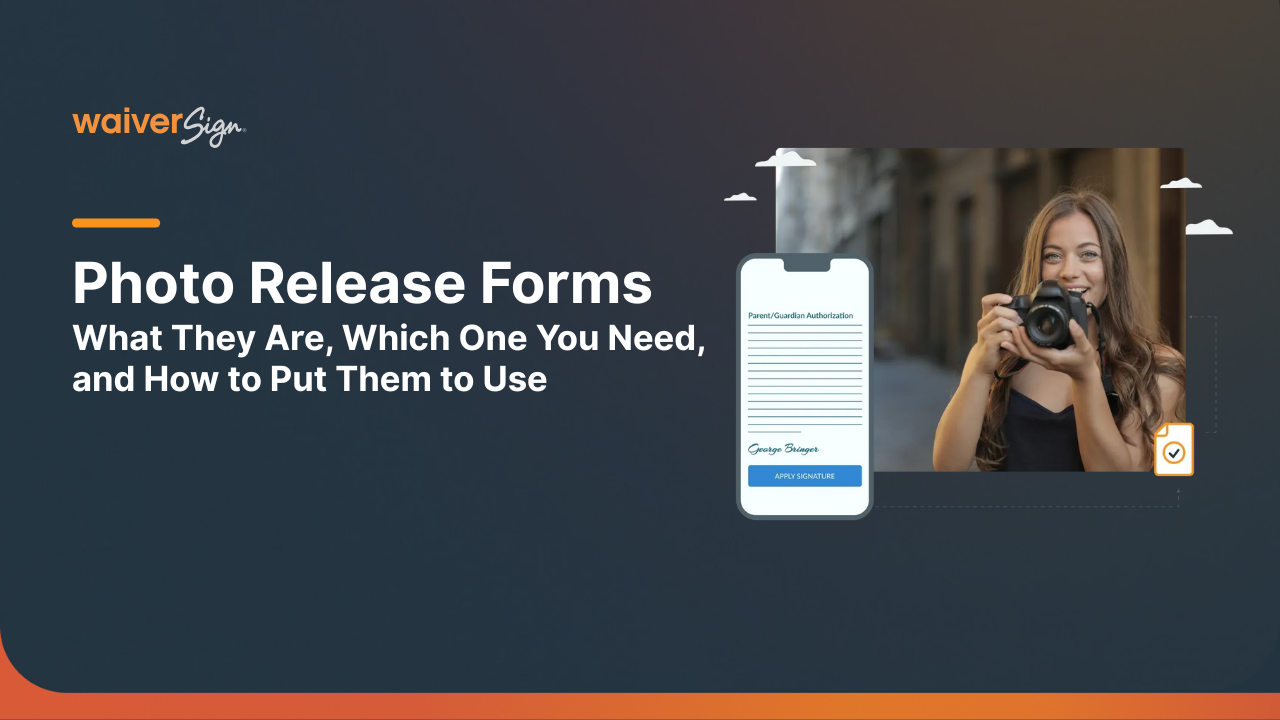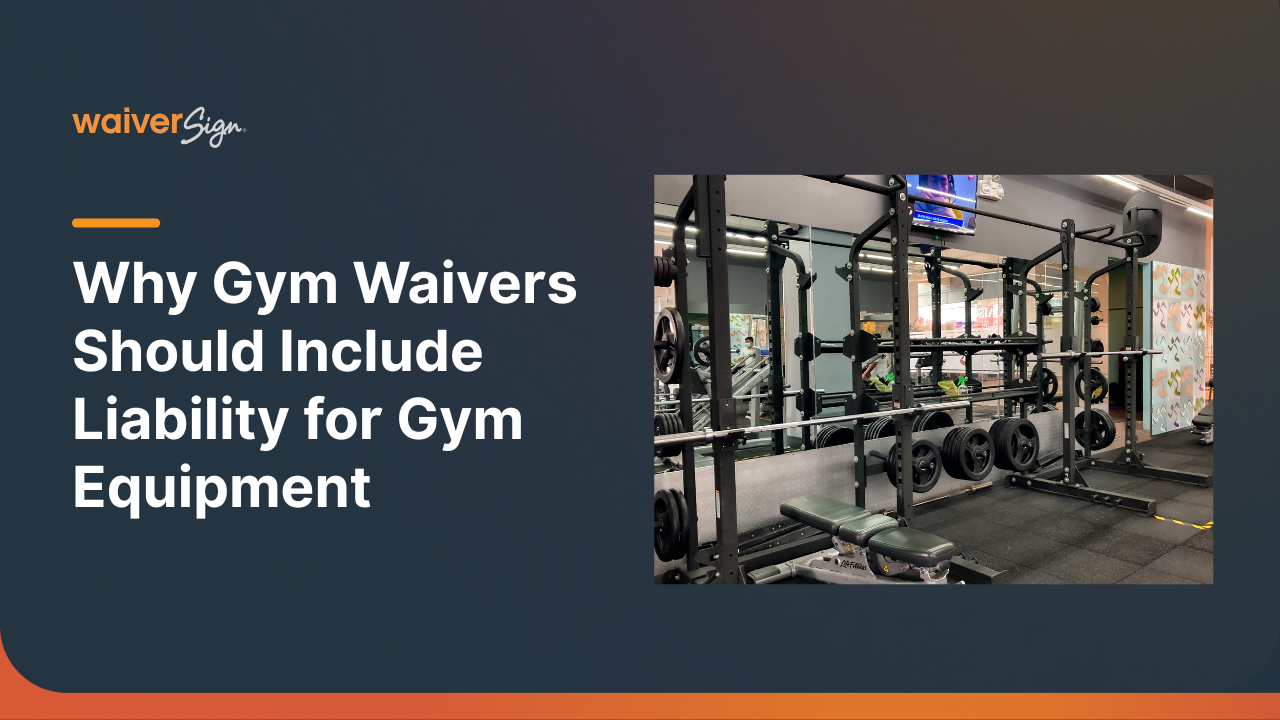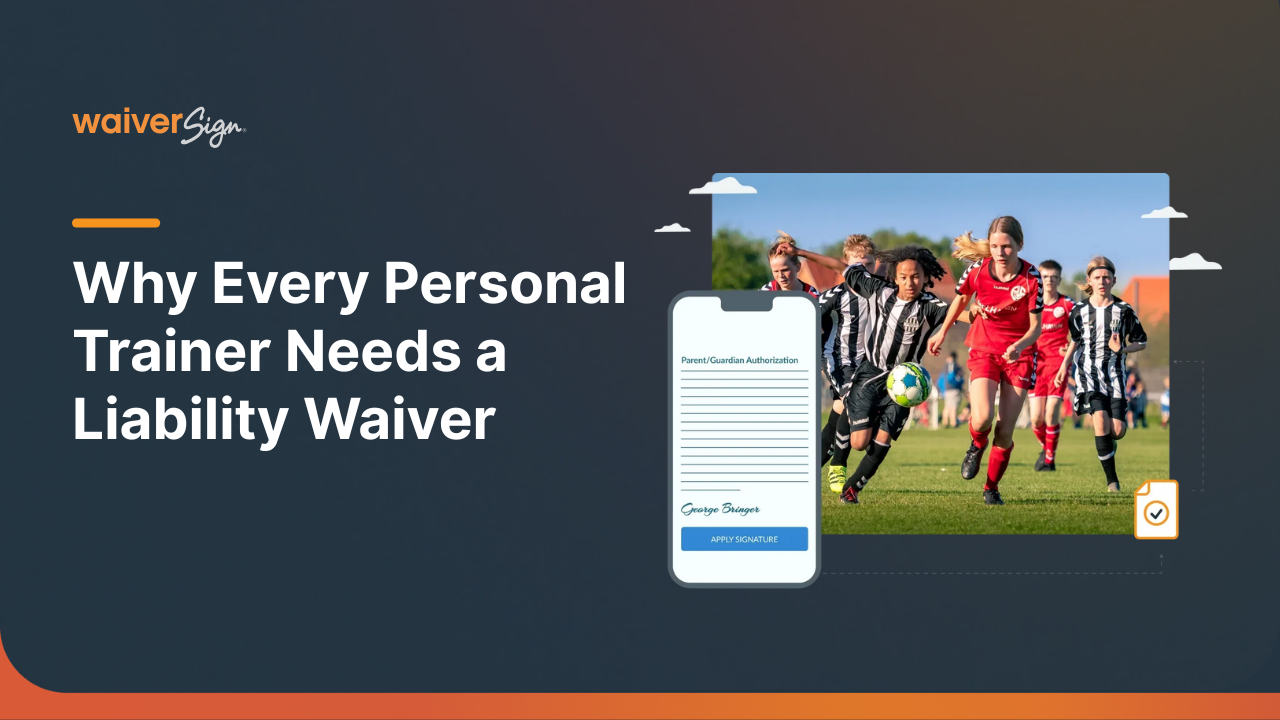Waiver Templates - Should I Use One?
STEPHEN PORRITT
Waiver Templates and Why You Shouldn’t Use Them

Stephen Porritt
Waivers have been a necessity for a number of businesses for decades now, but thanks to a global pandemic, they’re more popular than ever. As a result, a lot of companies are looking for a quick and cheap answer to their legal document needs. After all, who has the money to pay an actual lawyer to write something for them?
The internet has made a lot of things available to the general public, and quite a few businesses have used it to look for legal templates they can use instead of drafting a custom document. It’s hard to argue with a price of “free,” but that’s exactly what we’re about to do.
We know there’s a strong temptation to just Google “free waiver template,” grab the first one that looks good and slap your name on it, but we’d like to advise against it.
Let us explain why with 3 simple reasons.
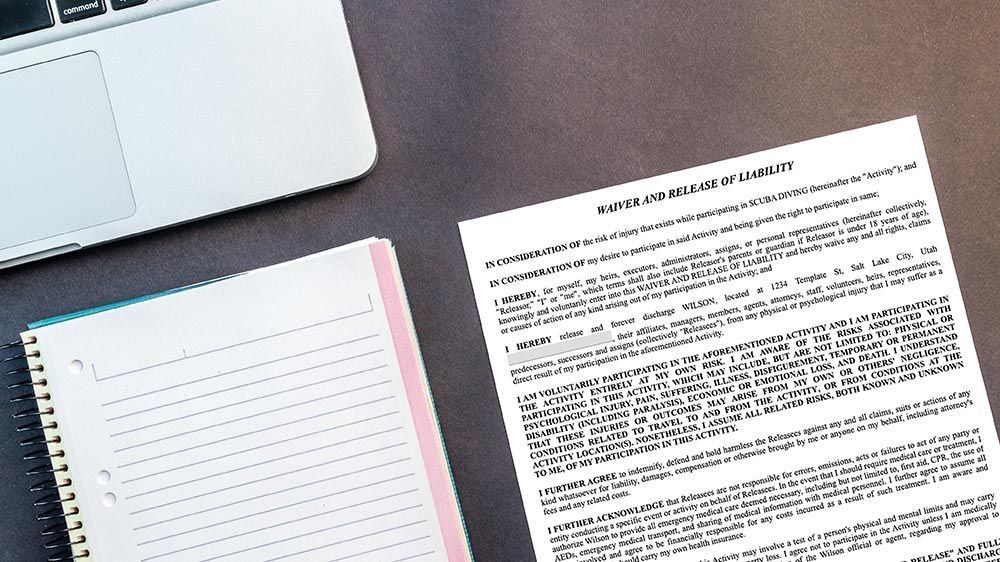
Reason #1: Templates Wont Cover Your Businesses Unique Needs
The advice to avoid using stock templates can be applied to any legal document, but since we’ve got “waiver” in our name, we’re going to use liability waivers as an example.
The first purpose of a waiver is to inform the signer of the risks related to the activity. If you’re, say, going bungee jumping, you sign a waiver that tells you that you risk certain injuries by, you know, jumping off a bridge. Or, if you’re really unlucky, you risk kissing terra firma at terminal velocity.
Most businesses obviously do everything in their power to minimize these risks, but there’s only so much that can be done before you’re just...not doing the activity. So, to make sure everyone’s on the same page regarding what’s at risk, and whether or not those risks are acceptable, liability waivers list all the risks inherent in the activity.
That way, no one can come to you after the fact and say “I didn’t know the risks.”
The problem here is that free waiver templates aren’t adapted to your profession, which has unique risks. Even if you find a waiver template that matches your profession (tours and adventure travel, for example), it won’t match your business, which will have its own unique risks.
But let’s pretend for a moment. Let’s say that you not only found a waiver in your industry, you also found one specific to your service (like our bungee jumping example above). In order for a waiver to serve its purpose, it needs to list all of the risks involved in the activity, and odds are if you’re grabbing a free template off the web, you’re going to be as lost as the rest of us when you read it to double-check.
In other words, even for templates that look like they perfectly match your situation, there’s not really any way to verify that it’s legitimate. If there are mistakes in the document, you’re not likely to notice, and neither will those who sign it. The court will definitley notice, though.
Reason #2: Templates May Include Non-Related Risks
The second purpose of a waiver is to give signers a chance to assume the risks of the activity. This is an extension of the previous purpose: first, you inform the participant or guest of the risks, then you give them an opportunity to accept those risks and agree that they’d like to move forward in spite of them.
This may seem a little redundant but it’s an important part of the legal process. With a properly written clause, the signer is explicitly stating that they know the risks as presented and that they’ve decided to assume the responsibility for any misfortune that happens as a result of those risks.
The problem with templates is they don’t always list all of the risks of the activity. If the risk isn’t listed in the clause that informs the signer, then it’s not covered in the clause that assumes the risks.
Worse yet, sometimes templates will include risks that aren’t relevant to your activity. This may seem like a “so what?” moment, but here, there can be too much of a good thing. Irrelevant risks can cause some serious complications should your waiver ever be brought up in a lawsuit (more on this below).
Bottom line: signers need a chance to agree to risks, and they need to know what those risks are to do that effectively.
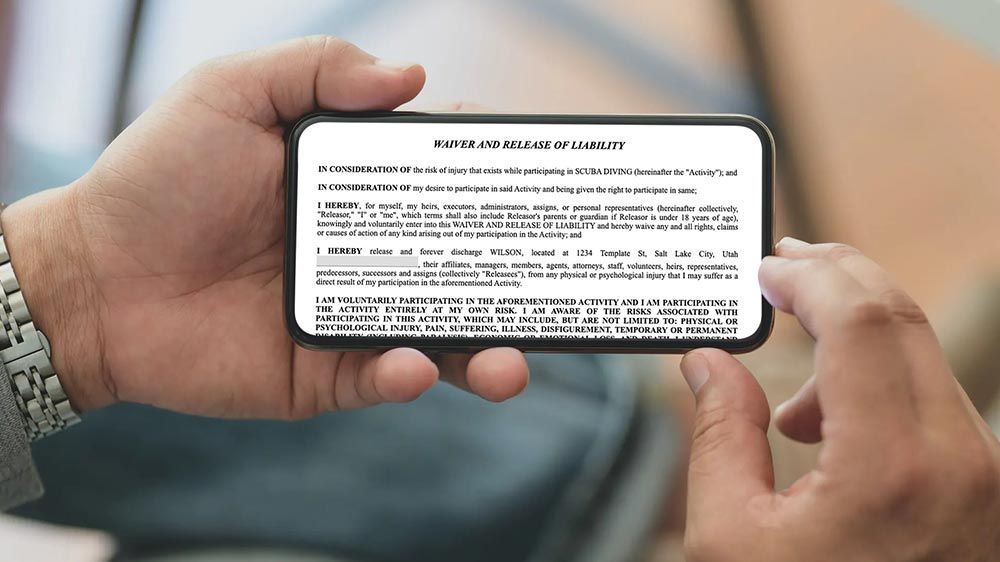
Reason #3: Make Sure You Are Covered
The third purpose of a waiver is to allow the signer to release you from liability and to waive their right to pursue legal action.
This purpose goes hand-in-hand with the previous one, in a peanut-butter-and-jelly sort of way. For the whole waiver thing to work, the signer has to assume responsibility for the relevant risks, and then explicitly relieve you of those same legal responsibilities. Waiving the right to sue is an important addition to those two, a kind of cover-all-your-bases deal.
If any of these three steps are missed, it leaves room for legal claims to be made on a plaintiff’s behalf against your company.
The issue here is the same as the previous three: if the waiver doesn’t match the activity, they will be releasing you from the wrong liabilities (i.e. they haven’t released you from the liabilities you want them to). That gives them the freedom to claim that your business is still responsible for whatever mishap befell the signer.
To put it another way, it’s the legal equivalent of wearing flip-flops in a snowstorm. Sure, it functions like most shoes, but it isn’t offering most of the protection you really need.
Waivers Should Be Specific To You Business
Perhaps the best way to illustrate how waivers are supposed to work (and how dangerous it can be when they don’t) is to take you through a potential lawsuit. So let’s do that.
These types of disputes typically bring one of four legal claims against a business (translated from legalese for your convenience):
- “You willingly overlooked something important, and that’s why I got hurt”
- “You didn’t tell me the risks, so I didn’t know them going in”
- “I didn’t accept responsibility for an accident like this”
- “I knew there were risks, but you still had a responsibility to protect me”
The first kind of claim, known legally as “gross negligence,” is not something that can be covered by any waiver, regardless of how well written, and you’ll be held fully responsible in the event it can be proven. For this kind of dispute, your only real defense is preventing the negligence in the first place.
The other three types of claims, though, you can do something about. With a well-crafted waiver, you can show the court that the signer knew the risks, accepted the responsibility for them, and released your business from the liabilities.
But if your waiver isn’t written to fit your business, the judge will almost certainly throw it out. If the signer didn’t release you from the relevant risks or wasn’t able to assume the relevant risks, the judge won’t count it.
Even more than that, though, the judge will be sensitive to whether or not the waiver was representative of the actual risks invovled in the activity. This is because, while waiving their rights is important, actually knowing their rights is even more important, and here’s why.
The court system isn’t too fond of waivers. Most judges don’t like the idea of customers signing away these important rights, and often feel that no one should be allowed to sign away those rights.
So when they find out that, not only did you try to have them sign away their right to sue in the event of an accident, but you didn’t properly inform them so they could make an informed decision, it almost never results in an outcome that favors the business.
Ultimately, with a mismatched waiver, you’re leaving the door open for numerous lawsuits that might otherwise be preventable. What we’re saying is that using a free template is a classic example of “penny wise, pound foolish.”
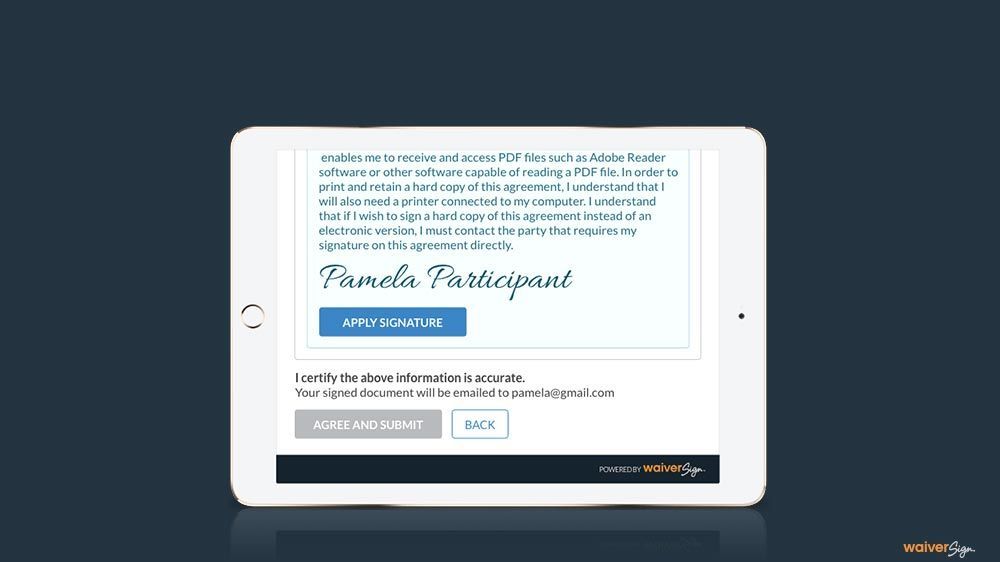
Going Digital With Waivers
There is a cost-saving method you can use that doesn’t open you up to unnecessary legal risk, though. Rather than printing out endless copies, storing them in space that you’re paying for, and dealing with all the frustration caused by illegible handwriting and signers scribbling out stuff as they please, you can administer waivers digitally.
Look, you’re going for a waiver template to make things easy on yourself. Shortcutting things that way will only make things harder in the end, but converting your waivers (and other documents) to a digital format can save you a lot of hassle. Plus, it’s cheaper than printing copies and storing them in physical space.
It’s a lot simpler than it sounds, and it sure makes looking up a waiver a lot easier. So if you’re interested, contact us. We’ll show you around and help you figure out if WaiverSign will work for your business. And if it doesn’t, we’ll help you find a solution that does.
Paperless. Contactless. Hassle-less. That’s WaiverSign.
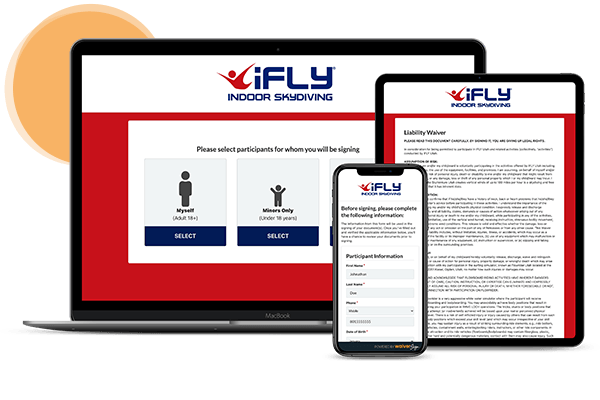
See If WaiverSign Works For You
Don't wait to make the next step in streamlining your business.


